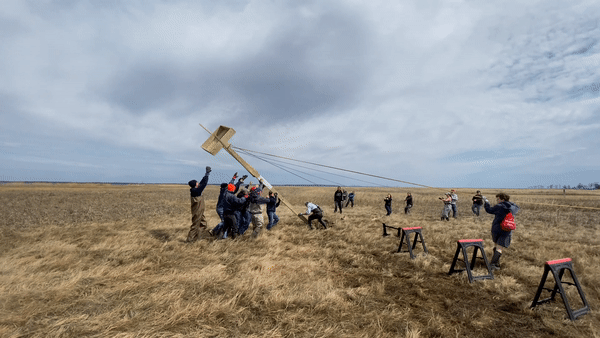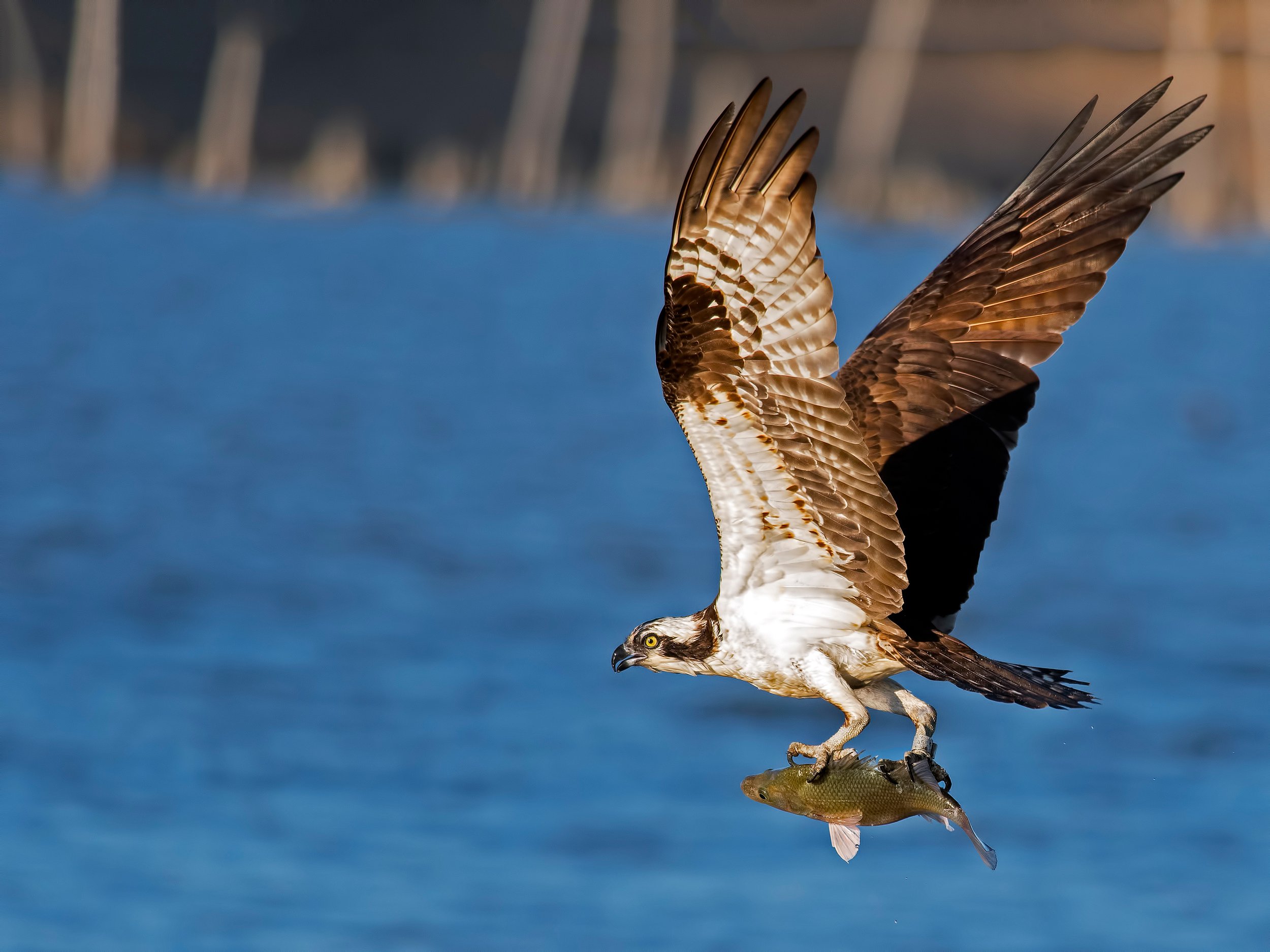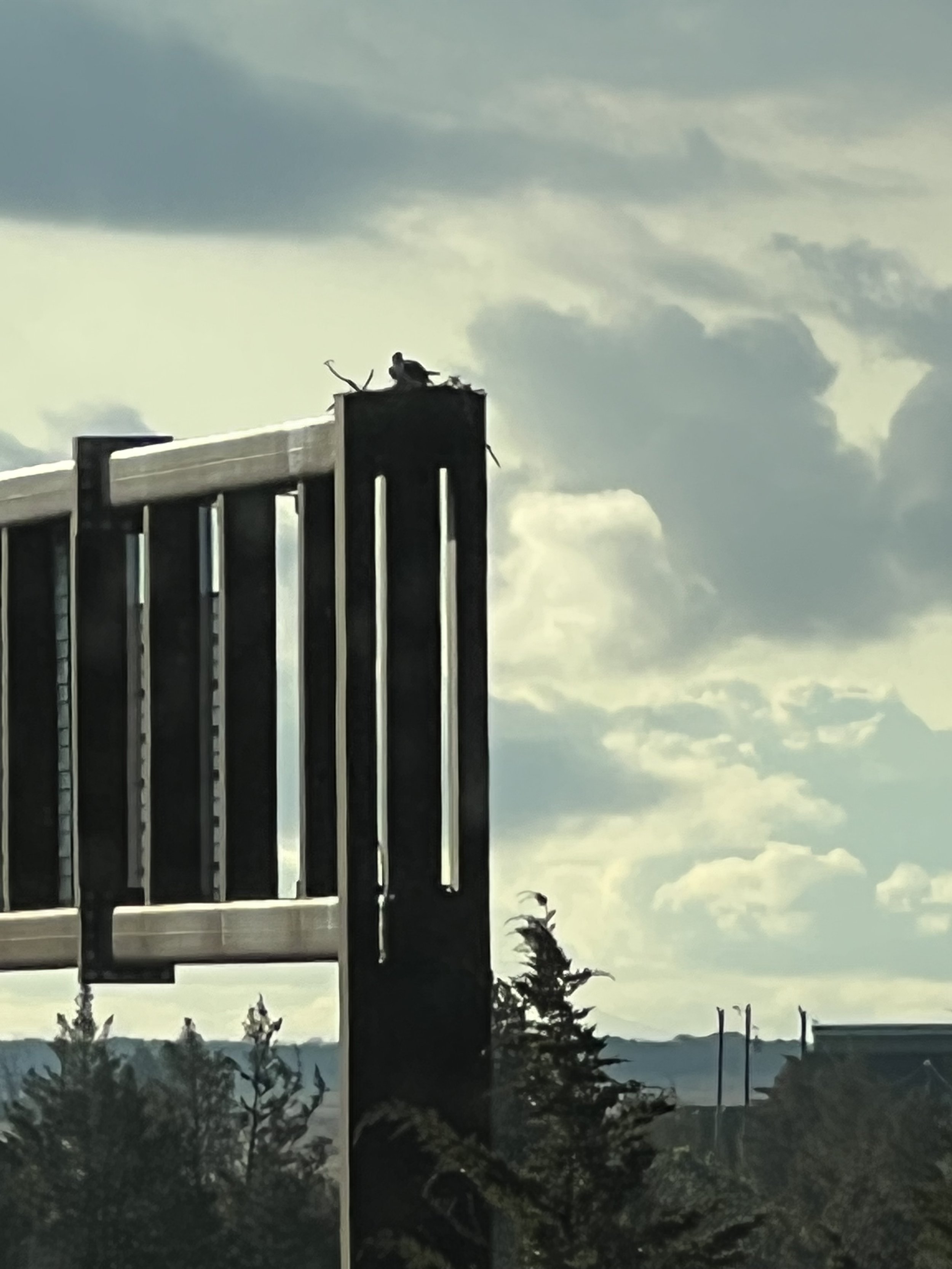Hoisting Homes for Ospreys Along the Jersey Shore
Hoisting Homes for Ospreys Along the Jersey Shore
By Jenna Reynolds
President/Director Save Coastal Wildlife Nonprofit
Like an old-fashioned barn raising, it’s a lot of fun and always a challenge. When the platform is up and in position, everyone breaks out in cheers and applauds. Three cheers for a job well done!
Spring has arrived at the Jersey Shore! Daylight is increasing, air temperatures are warming, plants are starting to grow, and animals are becoming more active and mating. All life is beginning to stir after the Arctic chill and northerly winds that dominated the scene during much of the winter.
A sure sign of spring along the coast is the arrival of fish hawks or ospreys (Pandion haliaetus carolinensis), a large raptor with a distinctive brown and white patterning, and sometimes confused with a bald eagle or a large gull. These fish-eating birds return to their nests to begin another busy breeding season near the water.
The first ospreys to arrive along the Jersey Shore appear soon after St. Patrick’s Day. They frequently spend a few days waiting for their long-established mates to join them. An osprey’s journey from their winter home in Central or South America is usually a two week or longer winged migration, travelling 100 to 200 miles a day.
When the birds arrive, they are hungry and tired, and immediately start fishing for a meal. According to the Cornell Lab website, “ospreys are excellent anglers.” Ospreys can catch a fish at least 1 in every 4 dives, with success rates sometimes as high as 70 percent. In addition, a single osprey usually spends on average only about 12 minutes hunting before making a catch.
But catching fish is not the only activity for a newly returned osprey. An osprey couple will typically stay together for life and return to the same nesting location to raise a family every year. But what happens when an osprey’s bulky stick nest is destroyed over the winter from a storm? Additionally, what will a young osprey do when it seeks to make a practice nest with hopes of using the site in the future to raise a family. Will there be safe places to build new nests for these fish hawks?
Ospreys prefer to make a nest atop a tall dead tree that is out in the open with a commanding view of the surrounding area, especially near the water. It also shouldn’t be close to live tall trees or tree branches higher than the nest. But as any realtor will tell you, real estate is all about location, and ideal locations for ospreys to make nests are scant in the northern Jersey Shore.
As the coastline becomes more populated and developed, and as sea levels continue to rise due to global warming, there is a shortage of standing dead trees along the Jersey Shore, especially in Monmouth County. A lot of natural opportunities to nest are not around anymore. So preferred nesting places for both adult and beginning ospreys are becoming increasingly difficult and problematic.
An osprey attempting to make a nest on a Garden State Parkway road sign structure. Picture from Karissa Trotter.
A desperate pair of ospreys might try to make a nest atop a light post or a utility pole, which are dangerous sites to raise a family due to the threat of electrocution. An eager pair of ospreys may also try to make a nest atop a cell phone tower or a large sign structure, which can cause conflicts when work must be done during the nesting season. Finding safe places for ospreys to nest is vital for the long-term survival of the species, as ospreys are still listed as a state threatened species in New Jersey and a species of special concern in New York State.
This is where Save Coastal Wildlife Nonprofit comes in. For 10 years or more, volunteers with Save Coastal Wildlife and other organizations have helped to install artificial nesting platforms along the highly developed coastline of the northern Jersey Shore including in Keyport, Union Beach, Aberdeen Township, and in Middletown Township. Many of these nesting platforms are occupied each year by nesting ospreys.
About a dozen or more volunteers come together every late March or early April. This is the preferred time to raise a tall wooden structure in the middle of a muddy and grassy tidal wetland, before the birds get back from their long migration. The goal is to install a new secure nesting home for an osprey family before the birds have a chance to make a poor nesting choice someplace nearby in the urban jungle of the New York metropolitan region.
It takes a lot or work and a lot of dirty shoes to raise a tall nesting platform. Volunteers regularly walk ankle or even knee deep in mud and muck to transport a 20-foot-tall nesting platform and supplies through a swampy ecosystem. Experienced volunteers know that long boots should be worn and completely closed, such as hip boots. For those inexperienced volunteers, they often go home with slimy socks and pants which stink of swamp mud.
It’s heavy work too. All total, the platform and tools can weigh more than 300 pounds. A mighty back-breaking burden at times as feet sink in wet soils or people get poked in the eye from tall reeds and shrubs.
Yet, these is not much time to take a break. The work to raise a nesting platform must be quick. An incoming tide threatens to maroon people in the middle of a wetland. Volunteers are racing with rising waters from the bay and moving around creeks and coves.
A post hole digger and shovels are essential tools to dig a deep hole in a grassy spartina field. Mud needs to be scooped out to make a hole that is wide and deep, about four or five feet deep and 3 feet wide to accommodate a 20-foot-tall pressure-treated wooden pole.
Volunteers will also assemble the nesting platform and attach the nest to the pole. The breeding nest box needs to be strong enough to support what may become a very sizeable and heavy stack of branches, especially as it is built up over successive years.
Once the set-up work is complete, the most important step comes next - rising the platform. Installing the pole and platform is a big and dangerous job. If done wrong, the platform could fall and break apart or worse it could fall on a person and cause serious injuries.
Everyone has an important job to play to make sure the platform is raised successfully, and people are safe. Some people hoist the extremely heavy structure with brute strength, while others hold long ropes that guide the nest into place and make sure the structure upright.
Like an old-fashioned barn raising, it’s a lot of fun and always a challenge. When the platform is up and in position, everyone breaks out in cheers and applauds. Three cheers for a job well done!
Little by little, people are doing what they can do in an effort to repopulate fish hawks to one of the most urban-suburban regions in the world. Good planning is the key to make sure a new nest is in a preferred location for ospreys to make a home along the Jersey Shore.
Although ospreys have exhibited tolerance of living near people, platforms are sought out in places that are not located in a very developed area. Although many people like the sight of an osprey, many of those same people are not willing to live with a large wild bird that makes noise early in the morning, eats and discard dead fish, and makes a mess from its nest or a nearby perch with bird droppings.
Before people started to install osprey platforms in the 1970s to help revive the osprey population from decades of declining populations from the over-use of DDT, an organochlorine pesticide, the birds frequently nested on top of large dead trees along coastlines or rivers. Unfortunately, poorly planned development projects along the coast and rapid sea-level rise have destroyed many natural nesting sites. Nesting platforms and other man-made structures, including buoys and channel markers are commonly used today by ospreys. Yet, nesting platforms are critical for attracting ospreys into new areas to spread out the distribution so they're not all concentrated in one region.
With money from donors and fund-raising events throughout the year, Save Coastal Wildlife Nonprofit is able to purchase hardware and lumber to build new nesting platforms for an osprey family to make a home. Yet people power is just as important as money. Without good people to help raise an osprey platform, this activity will never happen.
Fortunately for the ospreys, there always seems to be a group of great volunteers willing to help. Our volunteers are awesome at Save Coastal Wildlife Nonprofit. Gratitude to everyone for a wonderful team effort. Much appreciation goes to Frank Huza who builds the osprey platforms and works with volunteers to re-construct the platforms in the middle of the wetlands. Also, much appreciation to Ron Dente and Joe Sheridan who help to manage the volunteers during the platform installation and make sure people and props are not injured. All together, they help to make this a first-class job!!
The wait is on now to see how long it takes for a family of ospreys to make a new nesting platform a home. It might occur this spring, but more likely in later years. It usually takes around five years for a pair of ospreys to feel comfortable and safe enough to use a new platform. Yet, you never know! Already an osprey was spotted checking out a new nest.
Why are ospreys important?
Ospreys are located high on a food chain, so they are an important "indicator" species along the Jersey Shore. A nesting pair of ospreys can be used to monitor local water quality, fish populations, and even the overall health of an estuary. In essence, the more ospreys a waterway can support, the healthier the ecosystem. The good news is that osprey populations have been steadily, though slowly, increasing along Raritan Bay and Sandy Hook Bay in the last 30 years thanks, in part, to more free homes for osprey families that support population recovery.









